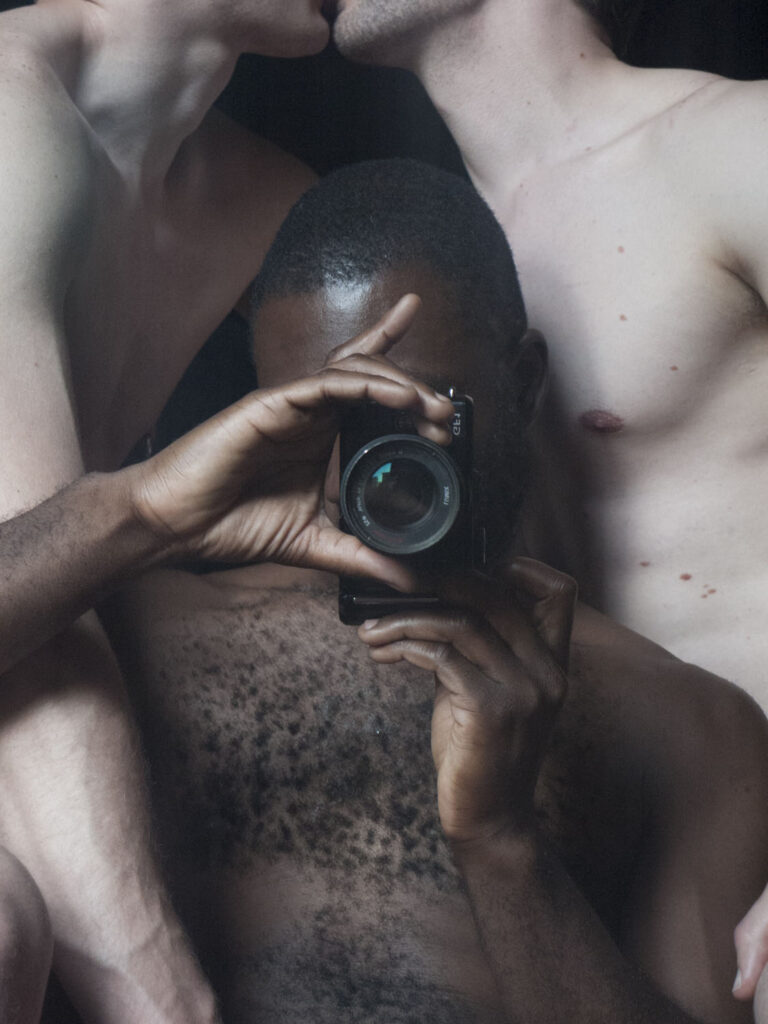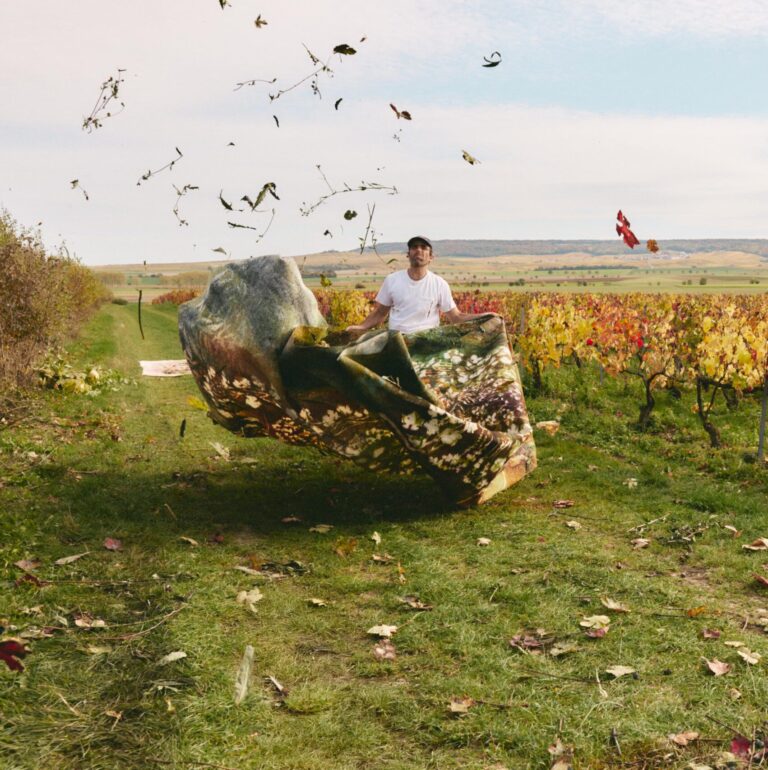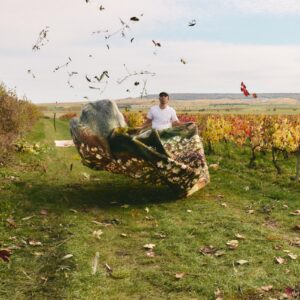
Frances Stark’s work is in theorizing relationships. Sometimes these relationships are human, sometimes even sexual, but on other occasions they are the relationships between things, between events, between institutions. This is clear in many of Stark’s most well-known works; her video pieces My Best Thing (2011) and Nothing is Enough (2012) focus on the sexual-psychological, post- coital intimacy of internet conversations between her and unknown Italian men she meets on Chatroulette, while the body of work associated with her installation, Bobby Jesus’s Alma Mater b/w Reading the Book of David and/or Paying Attention is Free (2013), was sourced from her then-unfolding relationship with her assistant, Bobby Jesus, and their mutual exchange of ideas and inspirations.

Yet despite the fact that conversation is so blatantly at the core of Stark’s work—or even the literal material of the work itself—it is often described critically as the work of a narcissist, a position that woefully misses the point. Stark’s work, if that of a narcissist, demonstrates that the narcissist’s satisfaction is dependent on others; even when the self is at the center, it is a self resplendent in, and indeed indebted to, the gaze of those around it. This observation alone negates the work of narcissism and thus, Stark’s work could more aptly be described as that of the anti-narcissist. Instead, it is a deep dependency on and even collaboration with others that seems to be the core of her practice, a fact consistently elided in art writing on Stark. When she discusses the men in her Chatroulette series, Stark says, “they were making the work with me,” a similar sentiment to that which she expressed regarding her friendship with Bobby Jesus: “I offered Bobby something akin to free schooling and he offered me free schooling in return.” Yet these collaborations are never accomplished simply—they are messy, incomplete, productive of unlikely results, outcomes impossible to capitalize on: mutual sexual satisfaction; friendships delegitimized by art (and other) institutions; empathy for uncouth men; shamelessness in self-expression; or as Stark calls it, “free love.” Easy to intuit, difficult to comprehend: the connections between people in Stark’s work lace it at the seams.
I have so many people to keep satisfied*
But Stark’s focus on relationships, on the in- betweenness of everything, takes shape in other objects too, beyond human forms. “What I’m doing in a lot of my work is having a kind of love affair with an artist’s voice,” Stark told Dennis Cooper in 1997. This was a reflection on Untitled (Goethe), one of many pieces in which Stark uses literary texts as resources for imagery, sometimes copying single words or letters from a text, other times recreating physical copies exactly, including annotations left by previous readers as in the works: The Love Song of J. Alfred Prufrock (1993) and I Hate Language (1995). As Stark wrote in 2007, “Whether spontaneous thoughts or ready-made insights delivered from a teacher, marginalia shows a reader perching intermittently on the body of a text, leaving reminders to ‘re-enter here’ or summaries to say ‘no need to cover this ground again.’” It’s clear that in Stark’s world, what’s worth honing in on are the unexpected ways we, objects and art are connected. And in this world, once entered, the relationships multiply. The marginalia of a used book offers a glimpse into the conjunction between reader and text, its reproduction that between original and copy— the notes serving as waymarkers on the trail for future readings (and readers), each annotation a relationship between past and future. Yet this seems to be another site where art writing on Stark goes astray, often hovering instead around the question: “is this language or image?” as if to say the two are separable. I wonder why, it doesn’t feel like the work is interested in interrogating questions regarding the distinctions of language versus image—instead, Stark presumes their inextricability. As a de facto ontology through Stark’s oeuvre, this presupposition about forms of meanings (and their inseparability) makes room for other questions—questions more provocative, ostentatious, perverse.
“I don’t think it’s possible to return from such audaciousness, do you?”
Lately, Stark has taken her reflections on the world to the informal spaces of social media, through her Instagram @therealstarkiller. But this practice is not surprising; for years, she has displayed a notable prescience when it comes to technologies of communication. Perhaps this prescience is also unsurprising: both of Stark’s parents worked in communications, her father as an electrical engineer for a printing company and her mother for a phone company. Her series, “Cat Videos,” (1999-2002) featured home recordings of her cats each set to its own soundtrack—from Black Flag’s Jealous Again to live recordings of Throbbing Gristle—years before the genre of YouTube videos, not to mention the platform itself, had emerged. The foresight of this series was made even more explicit in a drawing from 2004 that included the text, “Hopefully all of my cat videos will be available soon in a more practical and technologically advanced format for easier distribution and viewing.”
you are the artist n.1 I fucked in internet
Years later, in her Chatroulette videos, Stark would highlight the kind of internet exchanges which today have become not only naturalized (such as FaceTime) but monetized as key forms of neoliberal capital (e.g. cam girls; Patreon; OnlyFans, etc.). At the time, the inability to capitalize on the connections she formed on Chatroulette was central to Stark’s interest in the platform. She describes the experience as “initiated from this thing where you could see into anybody’s room who would let you in… it was the utopian perverse aspect of mass surveillance.” The sexual energy and even compulsion for sexual transaction (the constant flashing of genitals) that drove the site forward problematized how to capitalize on the individuals who used it, creating instead “strange forms of anti-capitalist labor,” as well as “safety in the common ground of needing to jerk off.” Beyond voyeurism, My Best Thing and Nothing is Enough illumine a surprising space where, as the result of a strange, illicit tourism, visitors can “see each other in a dignified way.”
It feels equally good and equally bad
While working on her most recent show, “US Greatest Hits Mixtape: Volume 2,” at her London gallery, greengrassi, another moment of eerie prescience occurred. The show featured a series of paintings, each juxtaposing a historical moment of US invasion or involvement in international coups with lyrics from the number-one pop song of the time. In the midst of work on these paintings, the regime change in Venezuela, which many cited as resulting from US involvement, took place. Stark had been choosing one event per decade to include in the show, not expecting that the one for our current decade would occur while the show was in progress. The painting that resulted shows the shock of this realization with a reflexivity typical of Stark; unlike the other paintings in the series that feature only text, Venezuela 2019 (2019) shows Stark herself at work on the painting, perched on a ladder and wearing a Karl Marx sweatshirt, etching in the lyrics to “7 Rings” by Ariana Grande. Rather than weaken the political sensibility of the series, Stark’s ease towards automatic reflexivity exposes the crux of political reasoning in all of us; only when we come full circle, when we see our own embeddedness in the struggle, does the significance dawn on us. This requires humility, another thread through much of her work—the humility to admit, as Stark says, “the paradoxes we face, the difficulty of dealing with being complicit, the discomfort about where power lies.”
She lives on top of her cage

Yet sometimes Stark herself features as the central figure of power, even in her earliest pieces. In her application to study with Mike Kelley at the Art Center College of Design, she included Total Performance (1990), a photo in which she appears in a green bikini and heels astride the Suzuki motorbike she had just raced across the Bonneville Salt Flats, breaking the land speed record. The piece is demonstrative of the straightforward feminism that runs through Stark’s work; a strength and sexuality that is not derivative of any particular feminisms or feminist texts. Of course, these moments of autonomy and strength are never left uncomplicated, as Stark is quick to admit her struggle with the desire to disappear once attention has been gathered. In two works titled Emergency Exit and Exhibitionist’s Venue (both 2009), Stark envisions through collage and simple modeling an “exhibitionist’s venue repurposed to entertain the possibility of a way out for a performer between acts,” a sentiment that drives at the core of her practice. For just as soon as she takes space for her own body, her own voice, she admits the fear that inheres in such a position. The work becomes inseparable from the experiences that ignite the work; the vision is totalizing, suffocating. Rather than “step up” to the task, she asks the more embarrassing question: how, when it is all so self-encompassing, do we escape? Are we allowed to disappear? These are the fair questions, for Stark’s world is total performance; in it, art does not begin and end—it continues.
Instead of feeling bad after, I just don’t have an after
*Italic lines from Nothing is Enough (2012)










 in your life?
in your life?

